Introduction
Large-cap funds play a crucial role in investment portfolios by providing exposure to well-established companies with strong financial positions. These funds offer stability and long-term growth potential, making them a preferred choice for investors seeking reliable returns. Selecting the best large-cap fund requires careful evaluation of current market trends, sector performance, and macroeconomic influences. By understanding these elements, individuals can make informed decisions that optimize portfolio diversification and risk management.
Understanding Large-Cap Funds
Large-cap funds are investment vehicles that primarily focus on companies with substantial market capitalizations, typically exceeding $10 billion. These funds provide exposure to well-established businesses with strong financial positions, making them a preferred choice for investors seeking stability. Large-cap funds can be categorized into growth, value, and blend funds, each offering distinct investment strategies. Growth funds target companies with high expansion potential, while value funds invest in firms that appear undervalued based on financial metrics. Blend funds combine both approaches, ensuring balanced portfolio diversification.
Large-cap ETFs, mutual funds, and index funds differ in their management styles and investment structures. ETFs are passively managed and trade like stocks, offering liquidity and low expense ratios. Mutual funds, on the other hand, can be actively or passively managed, with higher fees due to professional oversight. Index funds strictly follow benchmark indices, ensuring broad market exposure without frequent portfolio adjustments. While ETFs provide flexibility for traders, mutual funds may appeal to investors seeking professional management. Investing in large-cap stocks offers several benefits, particularly in terms of portfolio stability. These companies tend to have consistent revenue streams.
Evaluating Current Market Trends
Recent economic developments have significantly influenced the performance of large-cap stocks, shaping investment strategies and fund selection. The U.S. economy has remained resilient despite high interest rates, with consumer spending driving growth. However, market uncertainty persists due to ongoing trade policy adjustments and inflation concerns. Large-cap stocks, particularly in the technology and financial sectors, have experienced volatility as investors react to shifting economic conditions. Sector performance plays a crucial role in determining the best large-cap funds for investment. Technology remains the dominant sector, accounting for a significant portion of the S&P 500, but recent fluctuations in AI-driven stocks have introduced new risks.
Diversification across multiple industries enhances portfolio stability while capturing growth opportunities in emerging sectors. Federal Reserve policies, interest rates, and macroeconomic influences continue to shape large-cap fund performance. Despite aggressive rate hikes in recent years, the U.S. economy has maintained steady growth, defying expectations. Interest rate adjustments impact corporate profitability, influencing stock valuations and investor sentiment. Investors should monitor macroeconomic indicators and Federal Reserve guidance to anticipate market shifts and optimize fund selection strategies.
Top Large-Cap Funds in the Market
Several large-cap funds dominate the market, offering investors exposure to the most established companies in the U.S. economy. SPY, VOO, IVV, and FXAIX are among the most widely traded funds, each tracking the S&P 500 index while maintaining distinct management structures. SPY, managed by State Street Global Advisors, is the oldest and most liquid S&P 500 ETF, making it a preferred choice for traders. VOO, issued by Vanguard, and IVV, managed by iShares, provide similar exposure but with lower expense ratios, making them attractive for long-term investors. FXAIX, a Fidelity mutual fund, offers a cost-effective alternative for those seeking passive index tracking without ETF trading complexities.
SPY has an expense ratio of 0.09%, while VOO and IVV offer lower fees at 0.03%, making them more cost-efficient for buy-and-hold investors. FXAIX, a mutual fund, maintains an even lower expense ratio of 0.015%, appealing to investors who prefer traditional fund structures. Despite tracking the same index, slight variations in fund structure and trading spreads can impact returns. Historical performance analysis highlights the consistency of these funds in tracking the S&P 500. Investors should consider liquidity, expense ratios, and fund management strategies when selecting the best large-cap fund for their portfolio.
Performance Metrics for Large-Cap Funds
Assessing large-cap fund performance requires analyzing key indicators such as returns and volatility. Historical returns provide insight into how a fund has performed over different market cycles, helping investors gauge its consistency. Volatility measures, such as standard deviation, indicate the degree of price fluctuations, allowing investors to assess risk exposure. Risk-adjusted metrics, including the Sharpe ratio and beta comparisons, provide deeper insights into fund performance.
Long-term growth prospects and sustainability of fund returns are crucial factors in evaluating large-cap funds. Funds that consistently track major indices, such as the S&P 500, tend to provide reliable long-term growth. Economic cycles, interest rate changes, and sector trends influence fund sustainability, affecting future returns.
Sector Allocations and Investment Strategies
Sector allocations play a crucial role in shaping the performance of large-cap funds, as different industries contribute varying levels of stability and growth potential. Leading large-cap funds, such as SPY, VOO, and IVV, allocate significant weight to technology, financials, and healthcare stocks, reflecting broader market trends. Technology remains the dominant sector, accounting for approximately 27.6% of the S&P 500, followed by healthcare at 13.5% and financials at 10.4%. Investors should monitor sector trends and macroeconomic indicators to adjust their fund holdings accordingly. By diversifying across multiple sectors, investors can mitigate risks while capturing long-term growth potential.
Expense Ratios and Cost Considerations
Low expense ratios play a crucial role in maximizing investment returns, as they directly impact long-term portfolio growth. Since large-cap funds passively track indices, their management costs are typically lower than actively managed funds. Funds such as VOO and IVV maintain expense ratios as low as 0.03%, making them cost-effective options for buy-and-hold investors.
While lower fees generally translate to better returns, investors should also consider fund objectives and sector allocations when selecting a large-cap fund. Additional costs such as bid-ask spreads and tax efficiency also impact fund performance. Highly liquid funds like SPY and QQQ tend to have tighter spreads, reducing transaction expenses for investors. Liquidity concerns arise as well.
Risks and Limitations of Large-Cap Funds
Large-cap funds face market concentration risks due to their heavy reliance on a few dominant stocks. The top holdings in major indices, such as the S&P 500, have increasingly accounted for a larger share of total market capitalization, raising concerns about diversification. This concentration means that fund performance is disproportionately influenced by a handful of companies, particularly in the technology sector. If these leading stocks experience downturns, the entire fund may suffer, reducing the benefits of broad market exposure. Sensitivity to economic downturns and interest rate changes is another limitation of large-cap funds. Additionally, the correlation between stock and bond markets has changed. Portfolio diversification strategies can help mitigate risks associated with large-cap funds.
How to Choose the Best Large-Cap Fund for Your Portfolio
Assessing individual financial goals and investment time horizon is essential when selecting a large-cap fund. Investors focused on long-term growth may prioritize funds with lower expense ratios and strong historical performance, while those seeking liquidity and short-term trading opportunities might prefer funds with higher trading volume. Comparing fund structures, liquidity, and trading accessibility is crucial for selecting the right large-cap fund. Understanding index tracking differences and active vs. passive fund management further refines fund selection.
Conclusion
Selecting the best large-cap fund requires careful evaluation of investment goals, market trends, and fund structures. Leading funds such as SPY, VOO, IVV, and FXAIX provide broad exposure to industry-leading companies, each offering distinct advantages in terms of expense ratios, liquidity, and sector allocations. While large-cap funds offer stability and long-term growth potential, investors must consider risks such as market concentration and economic fluctuations when making investment decisions.
By assessing fund performance, sector weightings, and cost efficiency, investors can optimize their portfolios to balance risk and reward. Choosing the right large-cap fund ensures alignment with financial strategies while capitalizing on opportunities in evolving market conditions.


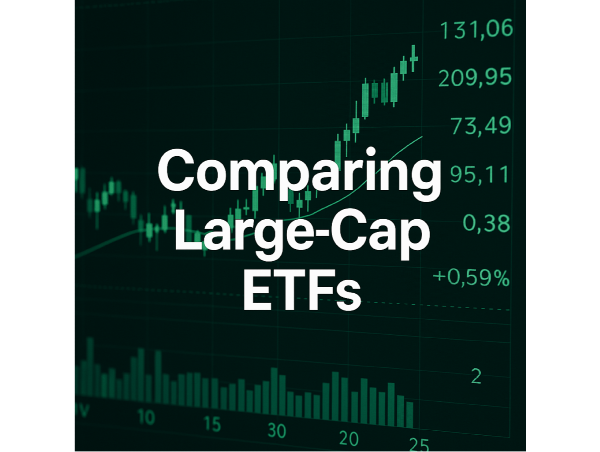
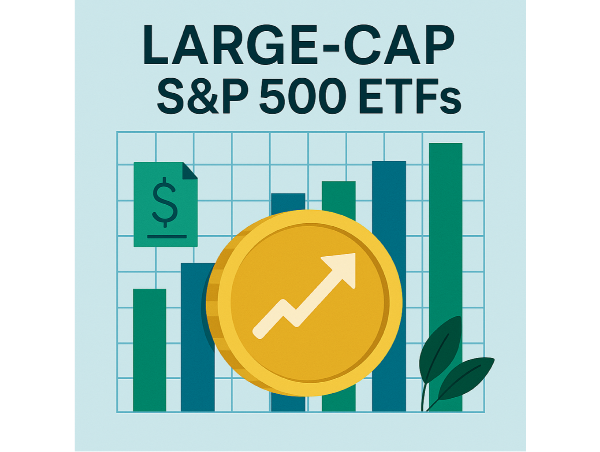
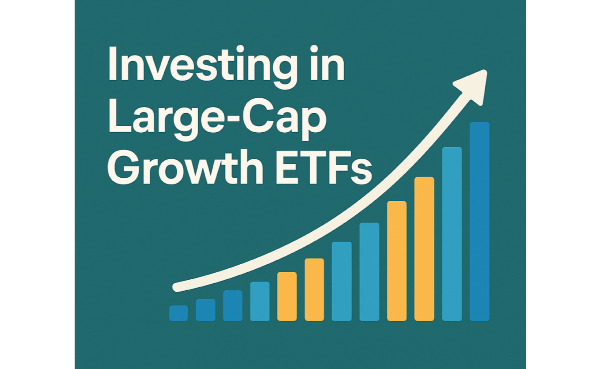
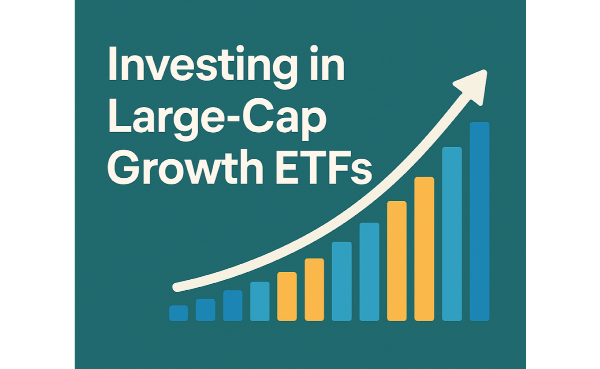



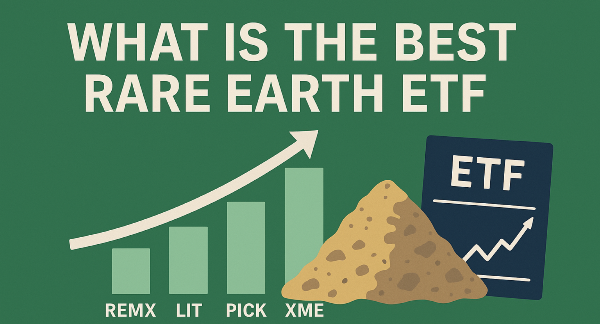


















Introduction
Large-cap funds play a crucial role in investment portfolios by providing exposure to well-established companies with strong financial positions. These funds offer stability and long-term growth potential, making them a preferred choice for investors seeking reliable returns. Selecting the best large-cap fund requires careful evaluation of current market trends, sector performance, and macroeconomic influences. By understanding these elements, individuals can make informed decisions that optimize portfolio diversification and risk management.
Understanding Large-Cap Funds
Large-cap funds are investment vehicles that primarily focus on companies with substantial market capitalizations, typically exceeding $10 billion. These funds provide exposure to well-established businesses with strong financial positions, making them a preferred choice for investors seeking stability. Large-cap funds can be categorized into growth, value, and blend funds, each offering distinct investment strategies. Growth funds target companies with high expansion potential, while value funds invest in firms that appear undervalued based on financial metrics. Blend funds combine both approaches, ensuring balanced portfolio diversification.
Large-cap ETFs, mutual funds, and index funds differ in their management styles and investment structures. ETFs are passively managed and trade like stocks, offering liquidity and low expense ratios. Mutual funds, on the other hand, can be actively or passively managed, with higher fees due to professional oversight. Index funds strictly follow benchmark indices, ensuring broad market exposure without frequent portfolio adjustments. While ETFs provide flexibility for traders, mutual funds may appeal to investors seeking professional management. Investing in large-cap stocks offers several benefits, particularly in terms of portfolio stability. These companies tend to have consistent revenue streams.
Evaluating Current Market Trends
Recent economic developments have significantly influenced the performance of large-cap stocks, shaping investment strategies and fund selection. The U.S. economy has remained resilient despite high interest rates, with consumer spending driving growth. However, market uncertainty persists due to ongoing trade policy adjustments and inflation concerns. Large-cap stocks, particularly in the technology and financial sectors, have experienced volatility as investors react to shifting economic conditions. Sector performance plays a crucial role in determining the best large-cap funds for investment. Technology remains the dominant sector, accounting for a significant portion of the S&P 500, but recent fluctuations in AI-driven stocks have introduced new risks.
Diversification across multiple industries enhances portfolio stability while capturing growth opportunities in emerging sectors. Federal Reserve policies, interest rates, and macroeconomic influences continue to shape large-cap fund performance. Despite aggressive rate hikes in recent years, the U.S. economy has maintained steady growth, defying expectations. Interest rate adjustments impact corporate profitability, influencing stock valuations and investor sentiment. Investors should monitor macroeconomic indicators and Federal Reserve guidance to anticipate market shifts and optimize fund selection strategies.
Top Large-Cap Funds in the Market
Several large-cap funds dominate the market, offering investors exposure to the most established companies in the U.S. economy. SPY, VOO, IVV, and FXAIX are among the most widely traded funds, each tracking the S&P 500 index while maintaining distinct management structures. SPY, managed by State Street Global Advisors, is the oldest and most liquid S&P 500 ETF, making it a preferred choice for traders. VOO, issued by Vanguard, and IVV, managed by iShares, provide similar exposure but with lower expense ratios, making them attractive for long-term investors. FXAIX, a Fidelity mutual fund, offers a cost-effective alternative for those seeking passive index tracking without ETF trading complexities.
SPY has an expense ratio of 0.09%, while VOO and IVV offer lower fees at 0.03%, making them more cost-efficient for buy-and-hold investors. FXAIX, a mutual fund, maintains an even lower expense ratio of 0.015%, appealing to investors who prefer traditional fund structures. Despite tracking the same index, slight variations in fund structure and trading spreads can impact returns. Historical performance analysis highlights the consistency of these funds in tracking the S&P 500. Investors should consider liquidity, expense ratios, and fund management strategies when selecting the best large-cap fund for their portfolio.
Performance Metrics for Large-Cap Funds
Assessing large-cap fund performance requires analyzing key indicators such as returns and volatility. Historical returns provide insight into how a fund has performed over different market cycles, helping investors gauge its consistency. Volatility measures, such as standard deviation, indicate the degree of price fluctuations, allowing investors to assess risk exposure. Risk-adjusted metrics, including the Sharpe ratio and beta comparisons, provide deeper insights into fund performance.
Long-term growth prospects and sustainability of fund returns are crucial factors in evaluating large-cap funds. Funds that consistently track major indices, such as the S&P 500, tend to provide reliable long-term growth. Economic cycles, interest rate changes, and sector trends influence fund sustainability, affecting future returns.
Sector Allocations and Investment Strategies
Sector allocations play a crucial role in shaping the performance of large-cap funds, as different industries contribute varying levels of stability and growth potential. Leading large-cap funds, such as SPY, VOO, and IVV, allocate significant weight to technology, financials, and healthcare stocks, reflecting broader market trends. Technology remains the dominant sector, accounting for approximately 27.6% of the S&P 500, followed by healthcare at 13.5% and financials at 10.4%. Investors should monitor sector trends and macroeconomic indicators to adjust their fund holdings accordingly. By diversifying across multiple sectors, investors can mitigate risks while capturing long-term growth potential.
Expense Ratios and Cost Considerations
Low expense ratios play a crucial role in maximizing investment returns, as they directly impact long-term portfolio growth. Since large-cap funds passively track indices, their management costs are typically lower than actively managed funds. Funds such as VOO and IVV maintain expense ratios as low as 0.03%, making them cost-effective options for buy-and-hold investors.
While lower fees generally translate to better returns, investors should also consider fund objectives and sector allocations when selecting a large-cap fund. Additional costs such as bid-ask spreads and tax efficiency also impact fund performance. Highly liquid funds like SPY and QQQ tend to have tighter spreads, reducing transaction expenses for investors. Liquidity concerns arise as well.
Risks and Limitations of Large-Cap Funds
Large-cap funds face market concentration risks due to their heavy reliance on a few dominant stocks. The top holdings in major indices, such as the S&P 500, have increasingly accounted for a larger share of total market capitalization, raising concerns about diversification. This concentration means that fund performance is disproportionately influenced by a handful of companies, particularly in the technology sector. If these leading stocks experience downturns, the entire fund may suffer, reducing the benefits of broad market exposure. Sensitivity to economic downturns and interest rate changes is another limitation of large-cap funds. Additionally, the correlation between stock and bond markets has changed. Portfolio diversification strategies can help mitigate risks associated with large-cap funds.
How to Choose the Best Large-Cap Fund for Your Portfolio
Assessing individual financial goals and investment time horizon is essential when selecting a large-cap fund. Investors focused on long-term growth may prioritize funds with lower expense ratios and strong historical performance, while those seeking liquidity and short-term trading opportunities might prefer funds with higher trading volume. Comparing fund structures, liquidity, and trading accessibility is crucial for selecting the right large-cap fund. Understanding index tracking differences and active vs. passive fund management further refines fund selection.
Conclusion
Selecting the best large-cap fund requires careful evaluation of investment goals, market trends, and fund structures. Leading funds such as SPY, VOO, IVV, and FXAIX provide broad exposure to industry-leading companies, each offering distinct advantages in terms of expense ratios, liquidity, and sector allocations. While large-cap funds offer stability and long-term growth potential, investors must consider risks such as market concentration and economic fluctuations when making investment decisions.
By assessing fund performance, sector weightings, and cost efficiency, investors can optimize their portfolios to balance risk and reward. Choosing the right large-cap fund ensures alignment with financial strategies while capitalizing on opportunities in evolving market conditions.